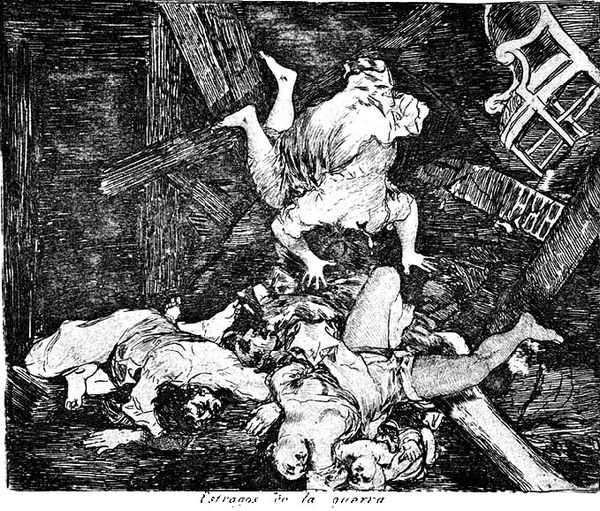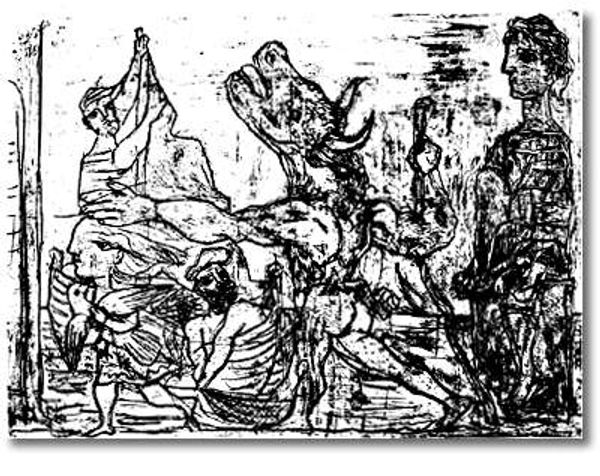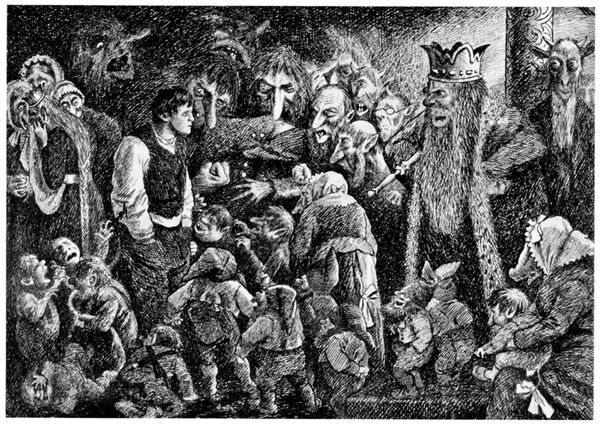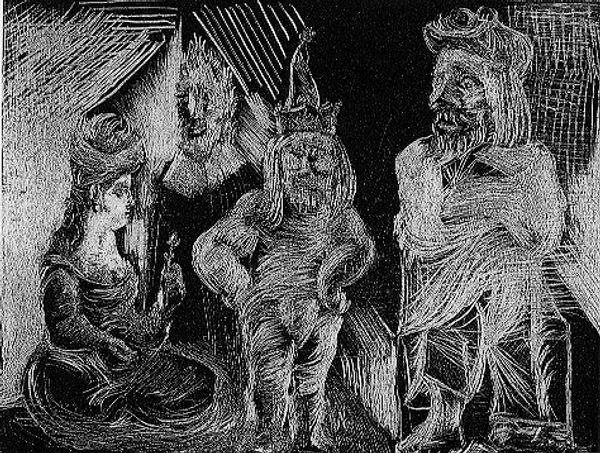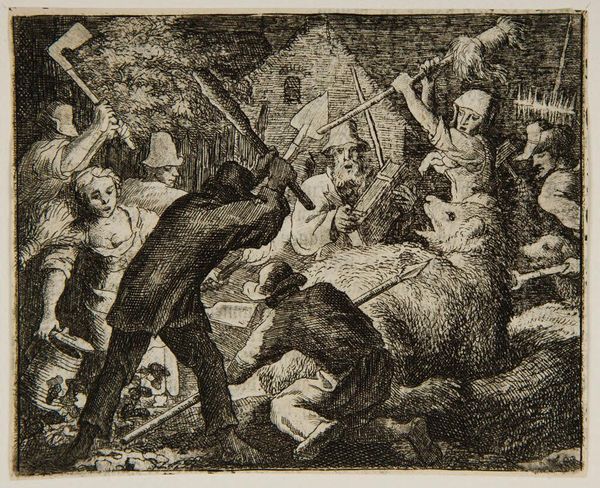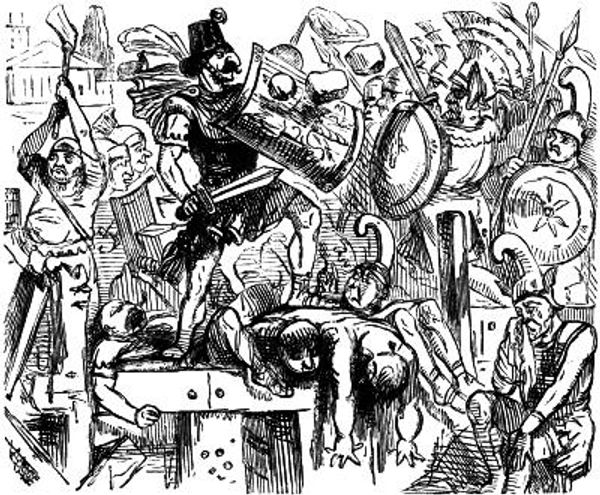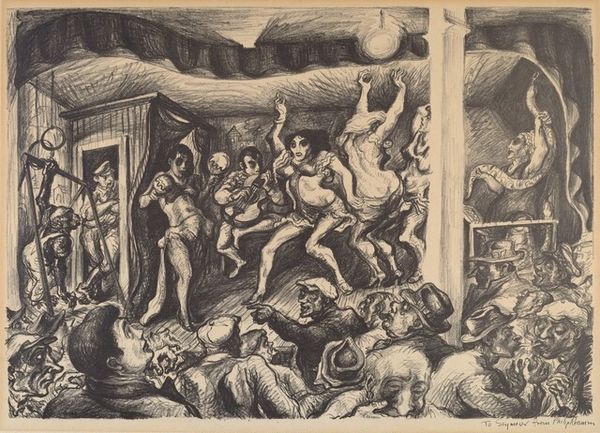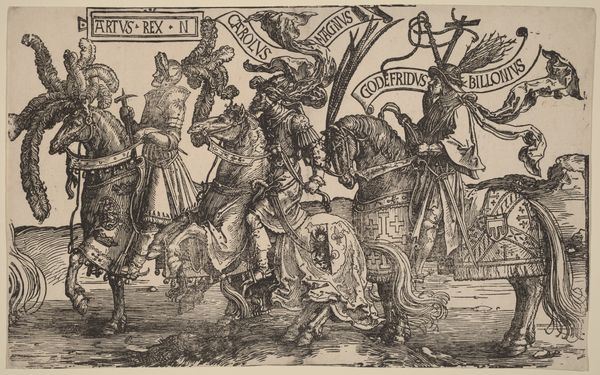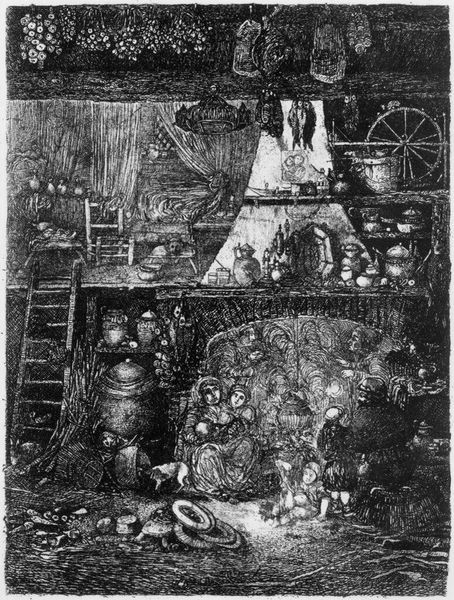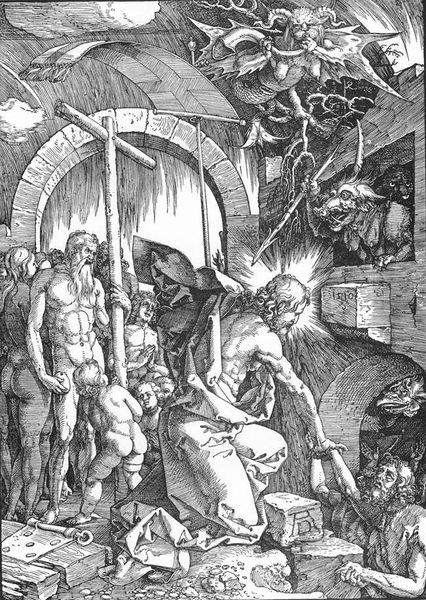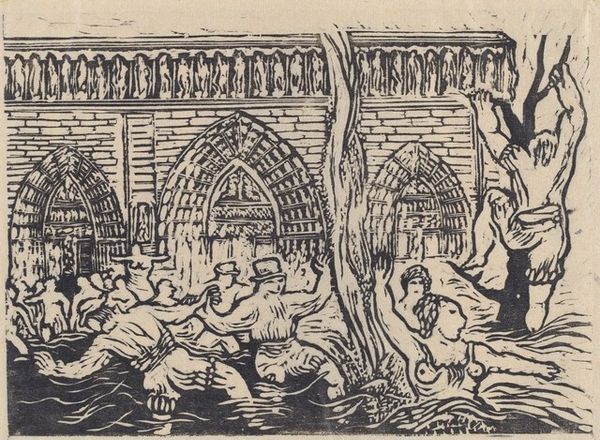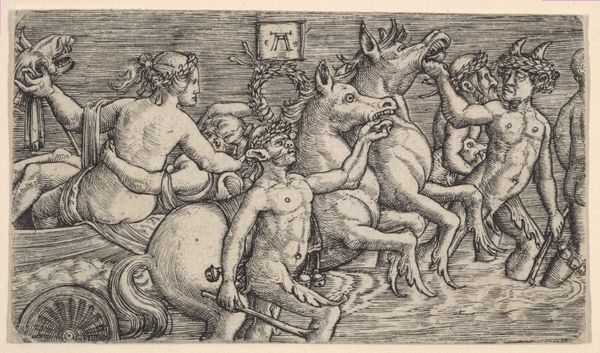
drawing, print, etching
#
drawing
#
cubism
# print
#
etching
#
sculpture
#
charcoal drawing
#
figuration
#
detailed drawing
#
mythology
#
line
Dimensions: 49.8 x 69.3 cm
Copyright: Pablo Picasso,Fair Use
Curator: This is Picasso's "Minotauromachy," an etching from 1935. I am intrigued by the frenetic energy, it’s chaotic yet meticulously rendered in stark black and white. What strikes you? Editor: The figures feel raw and vulnerable. Considering it's an etching, I'm interested in the physical act of creating this print. How does Picasso’s choice of etching as a medium affect the meaning, particularly its connection to labor and reproducibility? Curator: The laborious process of etching—the biting of the plate, the layering of lines—echoes the violence and struggle depicted, doesn’t it? Consider the material limitations and how they might have influenced the composition. Could the graphic nature of printmaking intensify the emotional impact? Editor: I suppose it makes sense when thinking of the process. Also, how accessible were prints at the time? Curator: Etchings allowed for wider distribution, breaking away from the exclusivity of painting. Think about the implications: was Picasso making a statement about art consumption and democratization through this medium? Does this artwork allow to subvert power dynamics of art making in relation to the consumption of its meanings? Editor: That's a good point. Considering the social context of 1935, with rising political tensions in Europe, does the etching medium also offer a sense of urgency, perhaps mimicking the speed and reach of newsprint and propaganda? Curator: Absolutely! The choice of etching connects it to a broader visual culture of the time. We should examine how Picasso engages with materials, like the etching plate itself, and consider his labor within the larger art system and society, in which reproducibility changes meaning. What have you taken away from this consideration? Editor: Looking at it that way highlights the materials and labor as vital layers of meaning, far beyond the narrative itself, making me reflect about mass production of art objects. Thanks! Curator: Agreed. Focusing on these facets adds complexity to our interpretation.
Comments
No comments
Be the first to comment and join the conversation on the ultimate creative platform.
